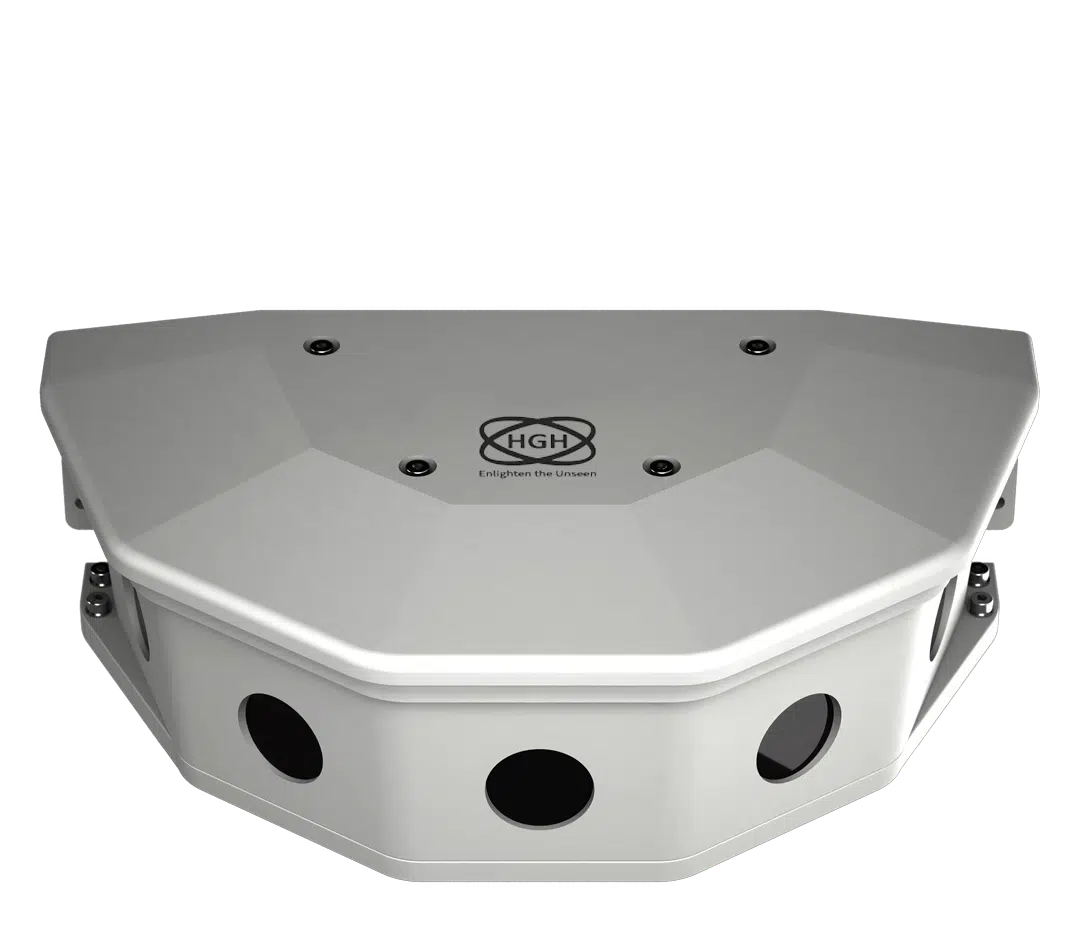- Home
- Was
- Defense Applications
- Unmanned Surface Vehicules (USVs)
COLLISION AVOIDANCEWith 360 thermal imaging technology
Tackling the Complex Challenge of Unmanned Surface Vehicles (USVs)
Unmanned surface vehicles are boats used for commercial activities or defense applications. These vehicles (USV, MUSV, LUSV, XLUSV) travel on the surface of the water without a crew. USVs are analogous to drones used in the aerospace industry. Increased maritime exploration activities and demand for maritime security have boosted the production of unmanned surface vehicles in recent years.
USV automation: Main Challenges

USVs must be able to cruise safely in maritime traffic where almost all ships are piloted by humans. The piloting systems on board USVs must guarantee the safety of the USV itself but also of surrounding vessels. To do this, the USV must comply with current navigation rules and be equipped with sensors guaranteeing the safety of this autonomous navigation. The USV must be equipped with reliable and efficient collision avoidance systems.
USV automation: Main Threats

The USV must anticipate all possible moving or static obstacles that will represent a threat for its safe cruising:
- Large vessels representing a huge obstacle to skirt
- Small islands or rocks emerging above sea level
- Floating objects (piece of woods,mines, buoys, iceberg…)
- Fast and small boats (jet-skis, RHIBs…)
- Specific infrastructures (bridges, offshore wind turbines…)
USVs Detection Solution
With Spynel Panoramic Infrared Cameras

HGH Infrared Systems has developed an innovative panoramic solution detecting and categorizing long-range threats. The SPYNEL infrared camera range protects any kind of critical infrastructures or military assets thanks to a 360° camera. Fully passive, the SPYNEL camera ensures real-time panoramic video and automatic detection, classification & tracking.
How to improve safety for USVs?
USVs can be operated in different modes, either with a remote operator controlling the vessel, or without human in the loop and in a fully autonomous mode.
The Spynel-F thermal panoramic sensor can be used for both operational modes. Small USVs have constraints in terms of weight and dimensions of the sensors to be installed onboard. Thanks to its compact design and light weight, the Spynel-F system is compatible with these requirements. Moreover, thanks to its day&night panoramic imaging, it gives unprecedented situational awareness to the remote operator compared to the traditional sectorial view offered by a Pan&Tit camera. In fully standalone mode, the automatic detection and classification capabilities of Spynel ensure that any kind of floating objects will be taken into account by the collision avoidance module.

Why choosing Spynel for USV?
360-Degree Surveillance Coverage
SPYNEL Panoramic Infrared Camera provides 360-degree surveillance coverage, ensuring the detection of all potential obstacles in any direction.
Integration with Collision Avoidance module
All videos and detection/tracking/classification data are transmitted over IP in real time to the USV Collision Avoidance module for immediate reaction. Cyclope is indeed compatible with numerous international standards to ensure interoperability with existing maritime systems (AIS, ECDIS, ONVIF…).
Early Detection in total darkness
The camera's infrared capabilities enable early detection, even in low-light or nighttime conditions, enhancing the detection system's effectiveness and reducing the risk of collision.
Multi-Target Tracking Capabilities
SPYNEL's advanced algorithms allow for precise multi-target tracking, enabling simultaneous monitoring of multiple USVs. This capability is crucial for managing scenarios involving multiple unmanned threats.
Real-Time Surveillance and Rapid Response
The camera facilitates real-time surveillance, allowing for immediate detection and tracking of USVs. This capability enhances response times, enabling prompt and effective countermeasures against potential maritime threats.
Detection of small objects with low RCS
Thanks to the thermal imaging technology and its AI deep learning module, the Spynel systems can detect and classify very small floating objects with low Radar Cross Sections which are not detected by radars (RHIBs, buoys, wooden boat,…).
Fully passive system
Spynel systems are passive sensors, unlike radars which are active and emit electromagnetic waves. Thus Spynel detection capabilities are not sensitive to the sea clutter disturbance.
Compact and light system
Mounted on USV, the Spynel-F panoramic infrared camera is paired with a specially designed compact and light gyro-stabilisation system. This platform reduces the effects of ocean movement and ship vibrations, to maintain high image quality. Its compactness and lightness make it compatible with small USVs.
Remote Monitoring Capabilities
SPYNEL offers remote monitoring capabilities, allowing a distant operator to get unprecedented situation awareness with real time day and night 360 degree video. The Spynel-F can also be used in sector scanning mode with higher frame rate for users focusing their attention towards certain directions.
Adaptability to Dynamic Maritime Environments
Designed to withstand the challenges of dynamic maritime environments, including adverse weather conditions and varying sea states, SPYNEL Camera ensures reliable operation in diverse and challenging settings.









